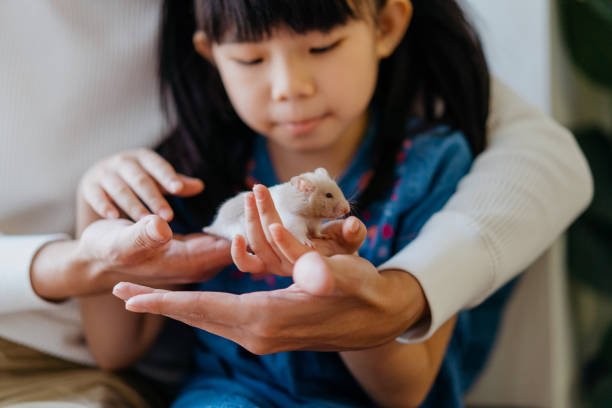13 Mistakes to Avoid as a New Hamster Owner (Especially in Cozy Homes)
This post contains affiliate links. This means I will make a commission at no extra cost to you should you click through and make a purchase. Read the full disclosure here.You finally did it—you brought home the tiniest, cutest little friend with twitchy whiskers and starry eyes. But now comes the real work: building a life that’s safe, calm, and fulfilling for your new hamster.
As cozy pet moms, we love turning little corners of our home into sanctuaries. But with hamsters, aesthetic isn’t enough. These tiny creatures have big needs, even in small spaces. And when you’re just starting out, it’s easy to make well-meaning mistakes that lead to stress, fear, and even illness in your hamster.
So let’s talk honestly: here are 13 of the most common mistakes new hamster owners make—and how to avoid them.
Grab your tea, fluff your pillow, and let’s build a tiny world full of love, not lessons learned the hard way.
1. Buying the First Cage You See at the Pet Store
Most cages on shelves are too small. Those “starter kits” are designed for shelves, not for hamsters. A hamster needs a minimum of 450 sq in of continuous floor space, but 600+ is the gold standard.
What to do instead:
- Look for cages like the Prevue 528 or Niteangel Vista
- Consider a DIY IKEA Detolf hack
- Prioritize deep base, open layout, and ventilation
Small cage = big stress. Spacious cage = peaceful pet.
2. Assuming All Hamsters Can Live Together
Hamsters are not social like guinea pigs. Syrians must live alone, and even dwarf breeds often fight later—even after getting along for weeks.
What can happen:
- Stress, territorial aggression
- Biting, injury, death
- You’ll end up needing to separate them (double cost!)
Stick to one hamster per enclosure. Always.
3. Skipping Research Before Bringing One Home
Hamsters are complex little creatures. It’s not enough to grab a cage, food, and wheel and call it a day.
Mistakes happen when you:
- Don’t know the right wheel size
- Use unsafe bedding
- Buy sugary treats
- Misread body language
Follow reliable blogs (like yours!), trusted YouTubers, and hamster communities like Hamster Hideout.
Caring starts with curiosity.
4. Using Unsafe Bedding (Like Fluffy Cotton or Pine)
Soft = safe, right? Not always. Many beginner owners buy fluffy cotton or scented bedding, thinking it’s comfy, but those materials can tangle around toes or cause digestive issues if swallowed.
Better choices:
- Paper-based bedding (e.g., Carefresh, Kaytee Clean & Cozy)
- Natural aspen shavings (not cedar or pine)
- Hemp bedding for low dust homes
Deep, natural bedding is essential for digging, nesting, and mental health.
5. Choosing the Wrong Wheel
Hamsters run up to 6 miles a night! A tiny or wire wheel causes spinal stress and foot injuries.
What to look for:
- 8”–9” for dwarf breeds
- 11”–12” for Syrians
- Solid surface only (no rungs or holes)
- Silent spinner or wooden wheels for quiet nights
Their wheel is their gym, meditation zone, and playroom—all in one.
6. Not Providing Enrichment
Hamsters need more than just a wheel. Without mental stimulation, they can become bored, destructive, and depressed.
Must-have enrichment:
- Natural chew toys
- Cardboard tunnels
- Sand bath
- Hideouts and platforms
- Foraging toys
Keep their world engaging and ever-changing. A bored hamster is a stressed hamster.

7. Overcleaning the Cage (Or Not Cleaning It Enough)
New owners often do one of two things:
- Overcleaning: Removes all scent, causing disorientation
- Under-cleaning: Leads to ammonia buildup and illness
Best practice:
- Spot-clean every 2–3 days
- Full clean every 3–4 weeks
- Leave a little clean bedding behind with their scent
Balance is key. Think tidy, not sterile.
8. Handling Too Soon or Too Roughly
Hamsters need time to adjust. Grabbing them on day one leads to fear and biting.
Let them:
- Settle in for 2–3 days without interruption
- Smell you before handling
- Climb onto your hand voluntarily
- Get used to your voice, scent, and presence
🫶 Respect leads to trust. Trust leads to bonding.
9. Ignoring Nighttime Activity Needs
Hamsters are nocturnal. Kids often want daytime pets, but hamsters are sleepy then and can be grumpy if woken.
Tips:
- Place cage in a quiet area where nighttime noise is okay
- Let kids watch or play in the evening before bedtime
- Don’t place cage in a bright kitchen or busy hallway
Let them live in their natural rhythm—it makes for a healthier pet.
10. Giving Too Many Treats
Yes, we love spoiling our pets, but too many sugary treats or seeds can lead to obesity and diabetes, especially in dwarf breeds.
Healthy options:
- Tiny pieces of carrot, cucumber, bell pepper
- Unsweetened cereals (like Cheerios)
- Mealworms for protein
- Limited fruit (like apple or blueberry)
Treats = love, but balance is love too.
11. Choosing the Wrong Hamster Breed for Your Lifestyle
Some breeds, like Syrians, are calm and cuddly. Others, like Roborovskis, are fast, shy, and best for observation only.
Best breeds for kids:
- Syrian
- Winter White dwarf
- Avoid Robos for young children
Match the breed to your pace and personality.
12. Placing the Cage in the Wrong Spot
A cage placed next to a window, near a heater, or in a loud room leads to stress.
Choose a space that is:
- Quiet during the day
- Not drafty or hot
- Away from pets like cats or dogs
- Free of strong smells (candles, air fresheners)
Small homes can still offer calm corners. It’s all about intention.
13. Thinking a Hamster Is “Just a Starter Pet”
This is the most heartbreaking mistake.
Hamsters aren’t toys, temporary practice animals, or silent decorations. They are living, feeling beings who bond, fear, explore, and love—just like bigger pets.
When we treat them like part of the family, they give so much back in return.
Final Thoughts
Hamster care isn’t complicated—but it’s detailed, loving, and intentional. Whether you live in a studio apartment, a kid-filled home, or a soft little nook of the world, your hamster can thrive when you avoid these beginner missteps.
You don’t have to be perfect—you just have to be present.
Your small pet deserves your big heart.














